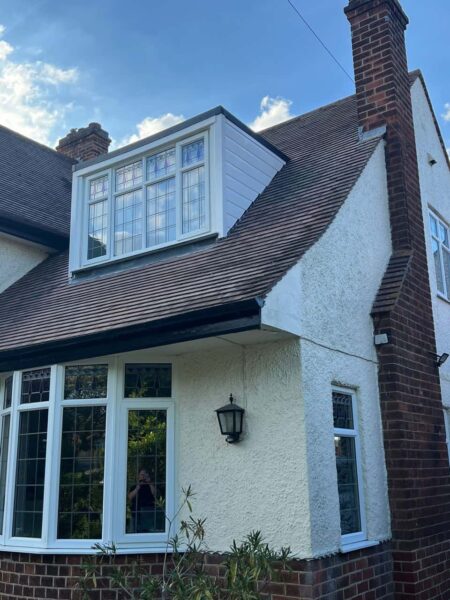The Role of Lead Flashing in Chimney Maintenance
Introduction: Chimneys are an essential part of many homes, providing warmth, ventilation, and a cosy atmosphere during the colder months. However, proper maintenance is crucial to keep your chimney functioning correctly and protect your home from potential damage. One vital component of chimney maintenance is lead flashing. In this blog post, presented by SC Roofing Olney, we will explore the role of lead flashing in chimney maintenance and why it’s an essential part of preserving your chimney’s integrity.
Understanding Lead Flashing
Lead flashing is a weatherproofing material used in various building parts, including roofs and chimneys. It consists of thin, malleable sheets of lead installed to create a watertight seal at the junctions between the chimney and the roof or walls.
The Importance of Lead Flashing in Chimney Maintenance
- Waterproofing: One of the primary functions of lead flashing is to prevent water from infiltrating the chimney structure. Rainwater can be particularly damaging to chimneys, as it can seep into the masonry, causing cracks and deterioration over time. Lead flashing acts as a barrier, directing water away from vulnerable areas and protecting your chimney from moisture-related issues.
- Preventing Leaks: A well-installed lead flashing system forms a tight seal that prevents leaks, ensuring water doesn’t enter your home. Leaks in the chimney can lead to costly interior damage, including water stains, rot, and mould growth.
- Preserving Masonry: Chimney masonry is susceptible to damage from freeze-thaw cycles, especially when water is present. Lead flashing helps to keep water out, reducing the risk of cracks and spalling in the chimney bricks or mortar.
- Longevity: Lead flashing is a durable material that can last decades when properly installed and maintained. Its longevity contributes to the long-term health of your chimney.
Common Lead Flashing Issues
While lead flashing is a reliable component of chimney maintenance, it can develop issues over time:
- Wear and Tear: Exposure to weather and temperature fluctuations can cause lead flashing to deteriorate, resulting in cracks or tears.
- Improper Installation: Flashing not correctly installed may not create a watertight seal, leaving your chimney vulnerable to leaks.
- Settling and Shifting: As a building settles or shifts, the flashing may move out of position, compromising its effectiveness.
Conclusion: Lead flashing plays a critical role in chimney maintenance by safeguarding your chimney from water damage and preventing leaks that can harm your home’s interior. To ensure your chimney is adequately protected, it’s essential to have your lead flashing inspected regularly by experienced professionals like SC Roofing Olney. By addressing any flashing issues promptly and conducting routine chimney maintenance, you can enjoy a cosy and safe environment in your home for years to come.
Call us on: 01234 860 698
Click here to find out more about SC Roofing Olney
Click here to complete our contact form and see how we can help with your roofing needs.

